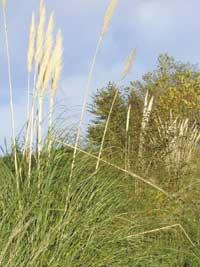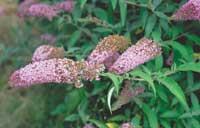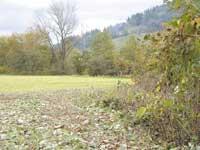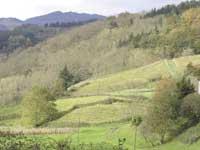The era of globalization, also of plants!

The best known species are the cases of animals (crabs, minks…). But plants are also there, and many are not saints. Many of the plants we use to feed or decorate are of external origin. However, some of these uses have “escaped”, naturalized and some have become invaders.
Most outdoor plant species are annual herbaceous or persistent plants well adapted to modified media. And most do not generate risks for the conservation of native flora. However, there are outdoor plants that have become very dangerous for local plants.
The proliferation of travel, international displacements, the proliferation of gardens and gardening, as well as the introduction of new crops, facilitate the diffusion of invasive plants. The transformation of the environment also significantly facilitates the introduction of exotic plants, since, in general, they are more vulnerable to the invasion of environments with large transformations. In addition, it is becoming a global problem, since in all places allochthonous plants proliferate, especially in the islands (50% of the flora of New Zealand is foreign), in zones of benign climate (the Cantabrian slope of the CAPV, for example, with mild temperatures and relatively abundant rainfall), very humanized and very modified.
In particular, in the Basque Country the importance of transforming the environment is remarkable. There is nothing more to see where invasive plants predominantly appear: on the margins of the roads, in the rocks, in the moved lands, in the margins of the rivers and streams, in the coast… In short, the invaders use areas where local plant communities have suffered some damage.
Main features


From the point of view of invasive plants, the most effective is rapid growth, maturity and seed abundance. In addition, they are often pioneering species, living in a similar climate in the territory of origin and proliferating without diseases or competences typical of the places of origin. In short, plants that succeed in territories far from the original become invasive. And by becoming invaders they can prevent or eliminate the development of local vegetation. For example, the Reynoutria japonica, which has so much increased in the rivers of Gipuzkoa, uses shade to drive the competition away.
Invaders in RD
The first systematic research on the subject was published in 1997. Of the 236 species mentioned there, 67 were settled in natural or semi-natural communities, of which 11 were classified as dangerous. Subsequently, in 2000 393 exotic species have been cited, of which 15 have been classified as very dangerous. In 2001, 111 exotic plant species were mentioned in the Urdaibai biosphere reserve in the report.
Although the outer perishable species appear scattered throughout the Basque Country, practically all the fully rooted species are found on the Atlantic side and appear, mainly, in the temperate areas. In short, in the slope with more benign climate (relatively abundant rainfall and mild temperatures throughout the year) and human pressure (abundant rotations, road margins, solar…).
There are many invasive plants of RD (only see the previous numbers), but we will cite four examples of the photographs. Selloana cutting has become a very common coastal practice. Native to South America, it is used in gardening for its spectacular nature. Buddleja davidii is native to Asia. It has striking floral sets, very suitable for gardening. It is widespread. At the same time, Reynoutria japonica has strongly invaded numerous river banks, especially in Gipuzkoa. Originally from Japan, it has been used in gardens. Its ability to regenerate from fragments of roots makes its extension very easy due to the movement of lands. Finally, we will mention the false acacia ( Robinia pseudoacacia). This tree, in fact, belongs to North America and has been used in the forestry sector, since its wood is very suitable for the construction of cuttings.
Any solution?

Yes. This would require adequate legislation or legislation, work against invasive plants and, of course, raise awareness and collaborate with sectors that work with them (e.g. forestry and gardening). In Europe, unlike the US, there is no specific legislation to regulate the entry of exotic plants and much less to deal with those that have become invasive.
However, in some places, due to the gravity of the problem, attempts to impute these plants have already begun. Mechanical (plant destruction), management (livestock or agricultural), biological (biological) and chemical methods are generally used. Of course, those attempts will be a mere attempt if plant displacements are not regulated… or if the answer to the last entry question is ‘no matter’.
Published in 7K.
Buletina
Bidali zure helbide elektronikoa eta jaso asteroko buletina zure sarrera-ontzian











